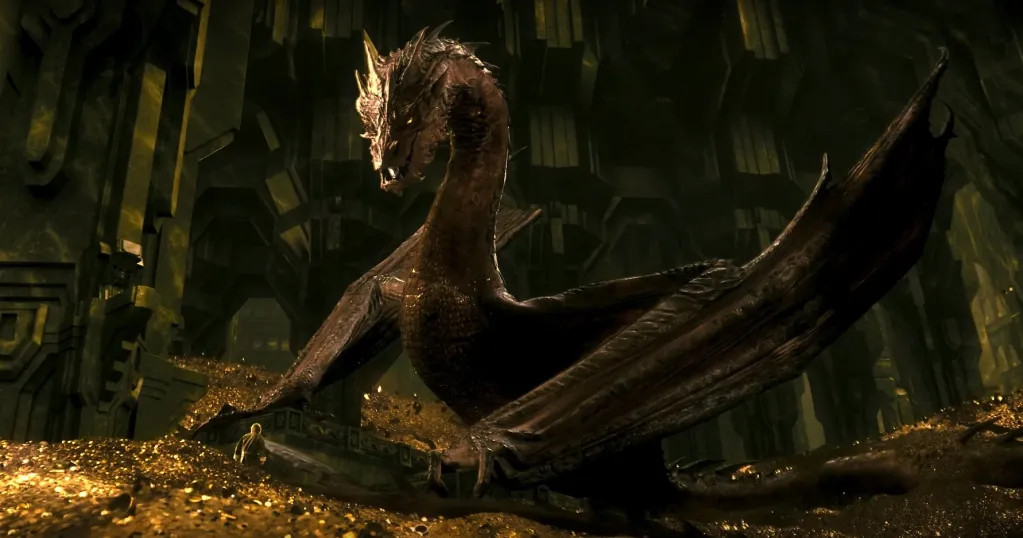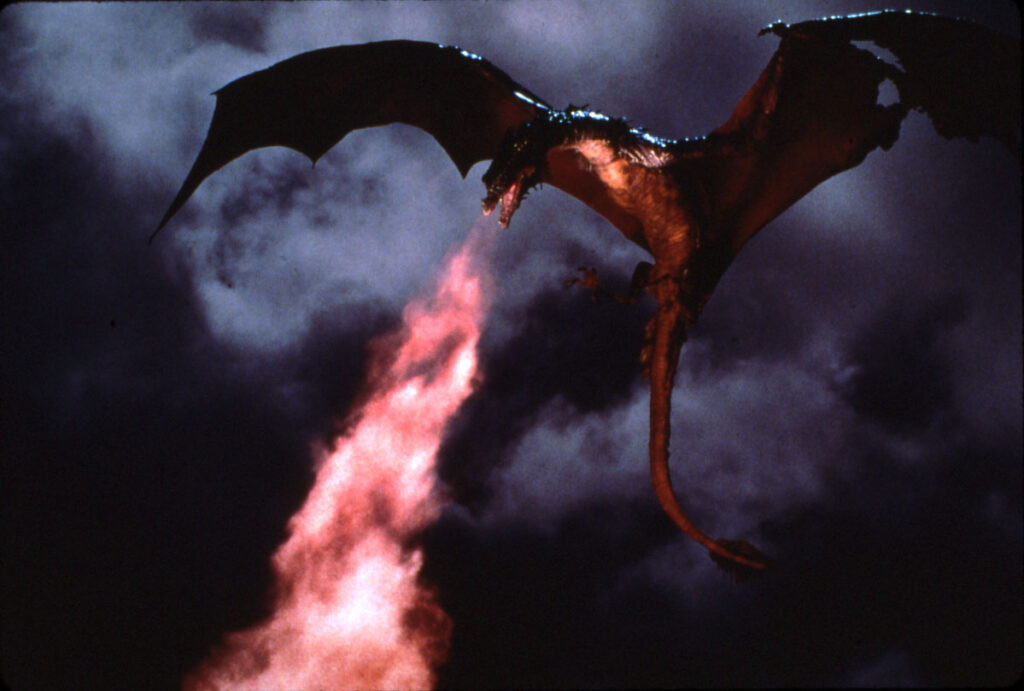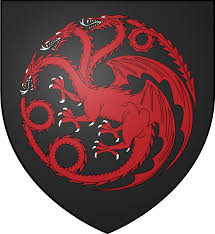Following the thrilling “The Red Dragon and the Gold” episode of HOUSE OF THE DRAGON, the spectacle of dragon warfare has once again ignited fervent discussions among fans. The clash at Rook’s Rest, a breathtaking aerial duel, prompts reflection: how do these dragons compare to others in fantasy, and what makes George R.R. Martin’s creations in A Song of Ice & Fire so unique?
Dragons, undeniably mythical, occupy a cherished space in human imagination across cultures. While no real-world counterpart exists, echoes of these legendary creatures resonate in folklore globally. Some speculate their origins lie in the awe-inspiring discovery of dinosaur fossils, unearthed by early farmers. Regardless of their inspiration, dragons have become a cornerstone of fantasy literature and art for centuries, captivating storytellers and audiences alike.
George R.R. Martin himself boasts a lifelong fascination with dragons. Named after the dragon-slaying Saint George, his affinity predates even his acclaimed A Song of Ice & Fire series. Works like “The Ice Dragon” and “The Way of Cross and Dragon” stand as early testaments to his draconic interests.
The portrayal of dragons varies wildly across cultures and fictional universes. Eastern dragons, particularly Chinese dragons, often embody benevolence and good fortune, depicted as wingless and lacking fiery breath. In contrast, traditional Western dragons are often forces of destruction, breathing fire and hoarding treasure. Modern fantasy has further diversified dragon portrayals, offering creatures like the amiable dragons of ERAGON and the endearing Toothless from HOW TO TRAIN YOUR DRAGON.
 Toothless from How to Train Your Dragon, a friendly black dragon with large green eyes, smiling playfully.
Toothless from How to Train Your Dragon, a friendly black dragon with large green eyes, smiling playfully.
J.R.R. Tolkien’s dragons in The Lord of the Rings and The Hobbit are unequivocally malevolent, serving as agents of darkness under Morgoth and Sauron, akin to Orcs and Trolls. Smaug, the iconic dragon from The Hobbit, embodies classic dragon traits: intelligence, avarice, and a vast hoard of gold. His ability to speak and his long slumber atop his treasure solidify the traditional dragon archetype.
 Smaug from The Hobbit, a massive red-gold dragon with scales glinting in the light, perched atop a mountain of gold coins and jewels.
Smaug from The Hobbit, a massive red-gold dragon with scales glinting in the light, perched atop a mountain of gold coins and jewels.
Before the CGI rendition of Smaug, the dragon Vermithrax Pejorative from the film DRAGONSLAYER held the cinematic crown for many dragon enthusiasts. Vermithrax, a formidable two-legged, two-winged beast, breathed fire and embodied raw, untamed dragon power, becoming a significant influence for dragon lovers.
 Vermithrax Pejorative from Dragonslayer, a large, green dragon with a powerful build and sharp spines, perched on rocky terrain, exuding a sense of danger.
Vermithrax Pejorative from Dragonslayer, a large, green dragon with a powerful build and sharp spines, perched on rocky terrain, exuding a sense of danger.
Conversely, the dragon from DRAGONHEART, voiced by Sean Connery, presents a starkly different image. This four-legged, talking dragon is benevolent and comical, befriending the hero in a film considered less impactful than DRAGONSLAYER.
In crafting A Song of Ice & Fire, Martin aimed to fuse epic fantasy grandeur with the gritty realism of historical fiction. Magic exists in Westeros, but it is less pervasive than in many fantasy worlds, drawing inspiration from Tolkien’s relatively low-magic Middle-earth. Martin sought to imbue Westeros with a sense of historical authenticity, evoking the Crusades, the Hundred Years’ War, and the Wars of the Roses, alongside the fantastical elements inspired by Tolkien.
Dragons were crucial to this vision, partly influenced by Martin’s friendship with the late Phyllis Eisenstein. However, Martin envisioned dragons grounded in biological plausibility within a fantastical setting. His dragons are meticulously designed: they breathe fire and fly, essential dragon traits, but possess two legs and two wings. Crucially, the wings serve as forelimbs, a biological distinction. Martin emphasizes the impracticality of dragons with diminutive wings or four legs, pointing out that no Earth creature has ever possessed six limbs.
The confusion surrounding dragon limb count often stems from medieval heraldry. Initially, both two-legged and four-legged dragons appeared in heraldic symbols. Over time, heraldic conventions distinguished between them, labeling four-legged creatures as “dragons” and two-legged ones as “wyverns.” This distinction, however, is arbitrary, given that neither existed outside of legend, and medieval heralds weren’t known for zoological accuracy.
In Westeros, both dragons and wyverns (in Sothoryos) are real. Therefore, Westerosi heraldry should reflect biological accuracy. The Targaryen sigil, correctly, features a two-legged dragon. Martin questions the logic of depicting four-legged dragons when Westerosi could observe real dragons. Wyverns in his world also have two legs, differing from dragons primarily in size, coloration, and lack of fire breath. While the Targaryen sigil has the correct number of legs, it’s not anatomically perfect; the wings are undersized, and the three heads are symbolic, representing Aegon the Conqueror and his sisters.
 Targaryen Sigil – Correct Two-Legged Dragon, a black three-headed dragon with two legs and two wings, depicted on a white background.
Targaryen Sigil – Correct Two-Legged Dragon, a black three-headed dragon with two legs and two wings, depicted on a white background.
 Targaryen Sigil – Incorrect Four-Legged Dragon, a black three-headed dragon with four legs and two wings, depicted on a white background.
Targaryen Sigil – Incorrect Four-Legged Dragon, a black three-headed dragon with four legs and two wings, depicted on a white background.
Martin notes with dismay the inconsistency in the GAME OF THRONES series. Early seasons correctly depicted two-legged dragons on Targaryen sigils, but later seasons, and HOUSE OF THE DRAGON, adopted the incorrect four-legged version, much to his chagrin. He even laments the erroneous four-legged dragons appearing on book covers, despite his objections.
Valyrian dragons in A Song of Ice and Fire also diverge from other fantasy dragons in temperament and biology. They are intelligent beasts, but they do not speak. They form bonds with certain individuals, a process shrouded in mystery, to be explored further in THE WINDS OF WINTER, A DREAM OF SPRING, and FIRE & BLOOD. Like wild animals, they can be trained but never fully tamed, retaining a degree of inherent danger. Each dragon possesses a distinct personality, often mirroring that of their rider due to their unique bond. Unlike Smaug, they are indifferent to gold and treasure, prioritizing basic needs like food and survival.
Dragons in Westeros are biological creatures with physiological needs. They require food, water, and oxygen. The myth of dragons slumbering for decades, like Smaug, doesn’t apply to Valyrian dragons. As creatures of fire, they require constant respiration. While they might hunt in the sea, they cannot remain submerged for long, risking drowning like any land animal.
Martin’s dragons are apex predators, carnivores preferring cooked meat. They are territorial and establish lairs, favoring mountainous regions, especially volcanic peaks, befitting their fiery nature. Unlike dragons dwelling in damp caves in other fantasies, Westerosi dragons prefer warm, elevated locations. Man-made structures like the Dragonstone stables, Valyrian towers, and the Dragonpit of King’s Landing are acceptable lairs, often providing convenient food sources. Young dragons, lacking such provisions, will establish and fiercely defend their own lairs.
Despite their aerial prowess and ability to traverse vast distances, dragons in Westeros are not nomadic. During Valyria’s zenith, despite hundreds of dragons and numerous dragon-riding families, they remained close to the Valyrian Freehold. Similarly, in Westeros, dragons generally stay near Dragonstone or the Dragonpit. While riders might travel long distances on dragonback, the dragons themselves do not roam freely across the realm. The wild dragons of Dragonstone, mentioned in Fire & Blood, remain within that region. Dragons are not found naturally populating the Riverlands, the Reach, the Vale, or other regions of Westeros.
Martin emphasizes the importance of grounding fantasy in internal consistency and established rules. While diverse dragon interpretations exist, maintaining canon within a specific fictional universe is crucial. Smaug and Toothless, though both dragons, belong to distinct fictional ecosystems and should not be conflated. Ignoring established canon risks undermining the believability and integrity of the created world.
Current Mood: Thoughtful about the intricacies of dragon design and lore in fantasy.
Tags: A Song Of Ice and Fire Dragons, Fantasy Dragons, Dragon Lore, George R.R. Martin, Dragon Design, Westeros

